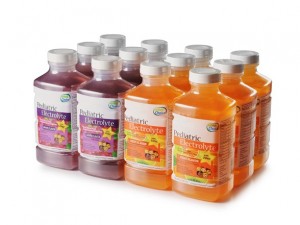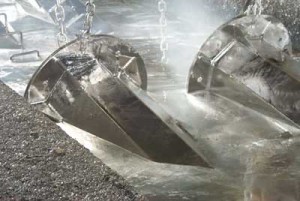Hi, welcome back to our blog about electrolytes in your life.
In this part, we’ll explain how ‘close’ are electrolytes with you 🙂
Electrolytes not only play an important role in our lives, especially in health problems, but also have great impacts on industries and science researches.
Let’s take a glance at applications of electrolytes in normal life. Are you aware that electrolytes are in your body? Yes, they are inside your body and play vital roles for your life!
They are essential for heart, muscle, and nerve functions. They also play a significant role in keeping the fluid balance in the body.
Some examples of the key electrolytes in your body are sodium, potassium, chloride, and bicarbonate. Disturbance in electrolyte balance cause adverse effects on your health. Below are the most important role for each of the electrolytes mentioned before.
- Sodium (Na+) movement is critical in generation of electrical signals in the brain, nerve, and muscle.
- Potassium (K+) regulates heartbeat and the muscle’s function.
- Chloride (Cl-) maintains the fluid balance.
- Bicarbonate (HCO3-) acts as a buffer to maintain the pH in blood.
Water moves readily across cell membrane, and if the total concentration of solutes inside and outside cell are not equal, there would be a net movement of water into or out of the cell. These are undesirable conditions for us.
- Cell burst When a cell is subjected to hypotonic solution whereby the concentration of solutes outside the cell is lower than inside the cell. As a result, there will be a net movement of water into the cell.
- Cell collapse When a cell is subjected to hypertonic solution whereby the concentration of solutes outside the cell is higher than inside the cell. Consequently, water will flow out of the cell.
The ideal condition is when cell is in the isotonic solution whereby the concentration of solutes inside the cell are the same as the concentration of solutes outside the cell. In this condition, the movement of water into and out of the cell are exactly balanced. When this balance is broken down, our bodies encounter a severe symptom which is called by dehydration. Therefore, electrolyte solution containing sodium and potassium salts (Figure 1) is used for treating or preventing dehydration caused by sport exercises, excessive alcohol consumption, diarrhea and vomiting. A homemade electrolyte solution can be the mixture of sugar, salt and water with appropriate proportions. Pre-made preparations are also available commercially and also for veterinary use, like Electrovite. Electrolytes are commonly found in fruit juices, coconut water, sports drinks, milk, nuts, and vegetables like potatoes or avocados.
Figure 1
We are now understanding electrogalvanization which is absolutely an important application of electrolytes in industry. The electrogalvanization is the process in which a layer of zinc is bonded to steel in order to prevent from corrosion. This process is related to electroplating. It means that we are setting an electricity current through an electrolyte solution – saline/zinc solution with a zinc anode and steel conductor. Among other electroplating process options, Zinc electroplating is always in the dominant position based upon electroplated tonnage per year
The modern electrolytes includes alkaline electrolytes and acidic electrolytes. The traditional solution usually used is based on ammonium chloride, options today can be ammonium, potassium or mixed ammonium/potassium electrolytes. The chosen content of zinc depends on the required productivity and part configuration. High zinc increases the bath’s efficiency (plating speed), while lower levels enhance the bath’s ability to throw into low current densities. Typically, the Zn metal level varies between 20 and 50 g/L (2.7-6.7 oz/gal) and the pH varies between 4.8 and 5.8 units. The following chart illustrates a typical all potassium chloride bath composition:
| Parameters | Value in g/L (oz/gal) |
| Zinc | 40 g/l (5.4 oz/gal) |
| Total chloride | 125 g/l (16.8 oz/gal) |
| Anhydrous zinc chloride | 80 g/l (10.7 oz/gal) |
| Potassium chloride | 180 g/l (24.1 oz/gal) |
| Boric acid | 25 g/l (3.4 oz/gal) |
Here is the video that will show you the electrogalvanization process:
Zinc Plating Electroplating electrolysis:
And some pictures:
See ya on the next post! 😀
Resources:
http://www.medicinenet.com/electrolytes/article.htm#what_are_electrolytes
http://www.livestrong.com/article/417256-how-do-electrolytes-affect-the-body/
http://health.howstuffworks.com/wellness/diet-fitness/information/electrolyte.htm
http://en.wikipedia.org/wiki/Electrogalvanization#Traditional_electrolytes
http://www.zinc.org/info/hot_dip_galvanizing
http://pixshark.com/galvanization-process.htm
http://kids.woot.com/offers/pediatric-electrolyte-your-choice




